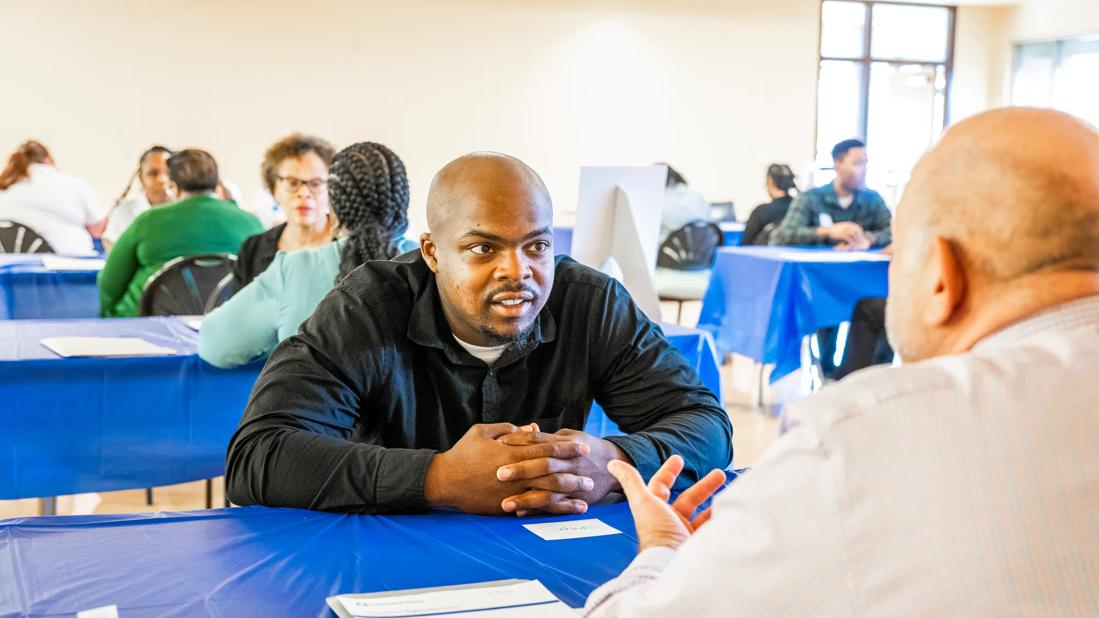Expert advice on attracting and hiring modern job seekers

As the job market continues to burn hot, job seekers are finding themselves in a position of power more than ever before. In the past, job seekers would be on the market for weeks. Now, job seekers are on the market for hours, and employers need to move quickly to grab their attention. By coming together to communicate the right message for today’s candidate, hiring managers and recruiters have more success filling their open positions and achieving their teams’ goals.
Advertisement
Cleveland Clinic is a non-profit academic medical center. Advertising on our site helps support our mission. We do not endorse non-Cleveland Clinic products or services. Policy
The ability of hiring leaders and recruiters to build a transformational relationship (one where both sides are invested in the other’s success) is key to a successful recruitment strategy and outcomes. The more effectively they communicate, the better their results in identifying and closing the right candidates will be.
Effective communication is more important now than ever, considering how recruitment efforts have rapidly changed over the past few years: healthcare is experiencing 25% less applications, the workforce is thinking about how they work differently and relying on meetings and digital communication. The level of effort needed to overcome decreased job seeker participation is at an all-time high level and will only be more challenging in the year to come.
Susan Clark, Chief Nursing Officer at Cleveland Clinic Martin Health in Florida, welcomes the opportunity to connect with her recruiters and discuss the culture and what matters most to her team. She says, “Leaders are able to talk to the recruiters directly to set up ‘What is the sell?’ or ‘What is the specific skillset we are looking for?’” Hiring managers must be able to communicate the WOW factor of the position and who would best thrive within the group’s unique culture.
Susan and her team are also aware of today’s virtual world. Many team members are working remotely and, in many instances, are not even in the same city. To counteract this barrier, Susan and her team have adapted to create virtual connections with recruiters. Susan’s team uses tools such as video calls for intake meetings and interview debriefs. Additionally, Caregiver Video Studio allows for both recruiters and candidates to learn more about the unit’s culture and environment, rather than on-site tours.
Advertisement
This virtual world calls for clear partnership. Kayla McNamara, a Talent Acquisition Manager who Susan often works closely with spoke on this, saying “We came together to close the gap on the time it was taking for candidates to be reviewed by a manager and then scheduled for an on-site team interview. We worked together to align with a first step direct hiring manager phone call with the applicant, then the manager would schedule the on-site panel interview within the asked timeframe, including the recruiter for clear visibility on where the candidate was in the hiring process.”
While many hiring leaders choose to check in weekly with their recruiters, Clark exchanges emails with her recruiter at least once a day. “I keep up with her on where we are at with certain positions to see where we need to concentrate.”
These check-ins are also the ideal time for both sides to share their knowledge and best practices for hiring – especially if service level agreements aren’t being met. Hiring managers and recruiters have unique insight and expertise, and it’s important they keep an open mind when listening to new ideas.
However often the two groups decide to touch base, though, the most important thing is that they remain engaged throughout the recruitment process. She adds, “You have to have a partnership. It makes it so much more seamless and efficient if we’re in sync.”
Something else we didn’t see in the past? A candidate who accepts an offer but continues to look for other jobs. “So many candidates will think nothing of accepting a position but still look and may jump over to something else before they even get here,” Clark states. “We need to still court them until they arrive,” Clark adds, referencing a recent article from Quint Studer in the Pensacola News Journal. “It’s important for the hiring manager and recruiter to figure out that balance of keeping in contact with them and keeping them engaged.”
Advertisement
This courtship needs to continue during the pre-onboarding stage, too. There are plenty of roadblocks that can pop up during any phase of this process, and recruiters and hiring leaders need to join forces to ensure candidates don’t get frustrated and bail along the way. Imagine if new hires have difficulty getting into occupational health or don’t get their IT equipment before their start date. But by quickly addressing these concerns together and working out a solution, hiring managers and recruiters can still fill their open positions and meet their target numbers.
Clark sums up the value of working together to achieve success. “It’s on all of us to rebuild the workforce. That’s why we have to work so closely together on it.”
Advertisement
Advertisement

Strategies for building connections, staying present

Annual event galvanizes leaders and inspires excellence

Expert tips from Cleveland Clinic’s Chief Legal Officer

Groups move the metrics in environmental services and sterile processing

Initiative generates new ideas for improving efficiency, eliminating waste

A new tool offers micro-education for improving meeting productivity

Well-being initiative aims to prevent chronic disease

Certified coaches help hospital teams build trust, improve communication